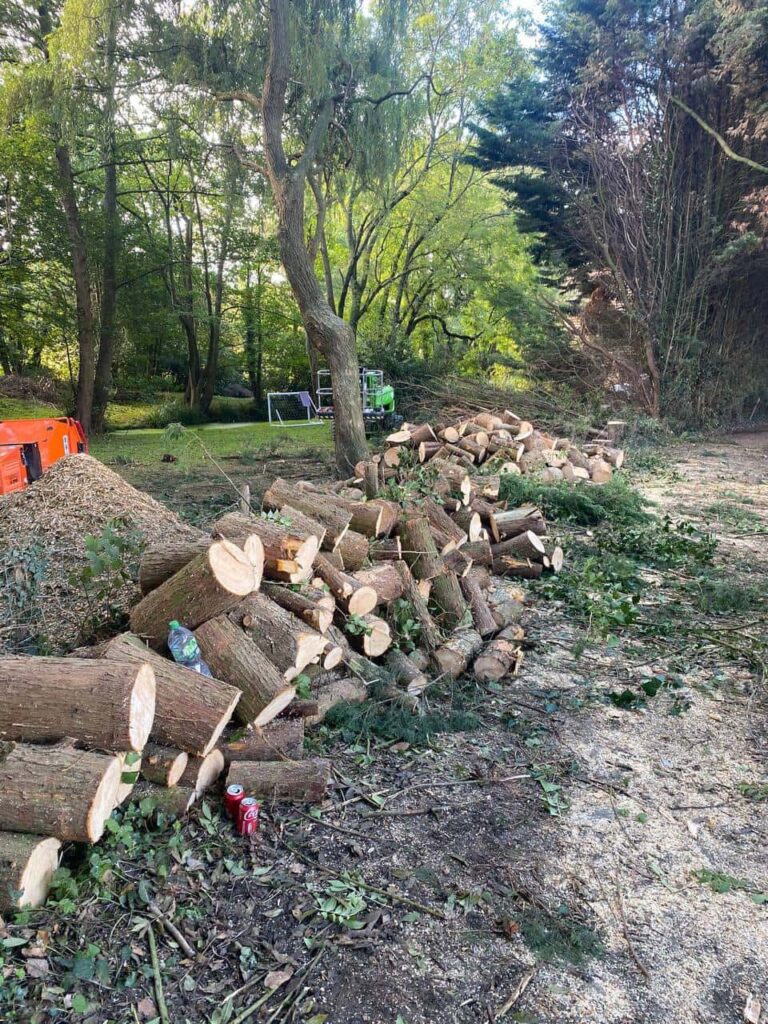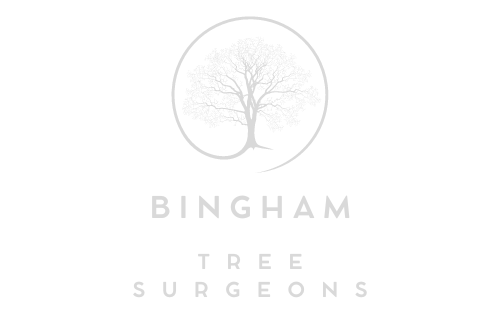Crown Reduction and Branch Balance: Maintaining Stability
Trees are an essential part of our environment, offering shade, beauty, and ecological benefits. However, for trees in residential or urban settings, maintaining their structural stability and health is crucial. Overgrown or unbalanced canopies can become hazardous, especially during storms or high winds. This is where professional crown reduction and branch balancing come into play. At Bingham Tree Surgeons, we specialise in these essential techniques to help property owners in Bingham, Nottingham maintain strong, safe, and healthy trees all year round.
Understanding Crown Reduction
Crown reduction is a precise pruning method aimed at reducing the height or spread of a tree’s canopy while maintaining its natural shape. Unlike topping — an outdated and harmful practice that removes large sections of the canopy — crown reduction is carried out with care, ensuring the tree’s structure and vitality are preserved.
This technique involves selectively removing the upper branches or outer growth to reduce weight and wind resistance. The goal is not just to make the tree smaller, but to restore balance and prevent structural strain.
Key Benefits of Crown Reduction
- Improved stability – Reduces wind load on upper branches, decreasing the likelihood of breakage.
- Enhanced safety – Prevents branches from overhanging roads, roofs, or power lines.
- Healthier growth – Encourages balanced new shoots and better air circulation.
- Better aesthetics – Maintains a natural and pleasing canopy shape.
Crown reduction should only be performed by experienced professionals who understand tree physiology and can identify which branches can be safely removed without damaging the overall health of the tree.
Why Branch Balance Matters
When a tree grows unevenly — perhaps due to light availability, storm damage, or previous pruning — its weight distribution can become unbalanced. An uneven canopy places unnecessary strain on the trunk and root system, increasing the risk of partial collapse or failure.
Balancing the branches restores symmetry, ensuring the tree can withstand environmental pressures more effectively. At Bingham Tree Surgeons, we assess each tree’s natural structure to determine the right pruning approach that improves both stability and appearance.
Common Causes of Imbalance
- Uneven sunlight exposure, leading to heavier growth on one side.
- Incorrect pruning, which removes too many branches from one area.
- Storm or wind damage, causing partial branch loss.
- Natural asymmetry, which worsens over time without maintenance.
By redistributing the canopy’s weight, branch balancing strengthens the tree’s overall integrity and reduces the risk of falling limbs or trunk failure.
How Crown Reduction and Branch Balancing Work Together
Crown reduction and branch balancing are often performed together to achieve both structural stability and visual harmony.
1. Assessment and Planning
Every successful pruning begins with a detailed inspection. Our experts at Bingham Tree Surgeons evaluate the tree’s species, age, health, and growth pattern to determine which branches can be safely reduced or removed.
2. Selective Reduction
Branches at the top or outer edges of the canopy are carefully shortened to lower the overall height and spread. Cuts are made just above healthy lateral branches, allowing new growth to form naturally without compromising structure.
3. Redistributing Weight
If the canopy is heavier on one side, selected branches are pruned or thinned to even out the distribution. This process reduces leverage stress on the trunk and helps the tree grow more symmetrically.
4. Final Shaping and Inspection
Once pruning is complete, the tree’s new structure is reviewed to ensure balance and natural aesthetics. Any remaining weak or crossing branches are removed, ensuring the canopy grows healthily in the coming seasons.
The Importance of Professional Expertise
Tree surgery is both an art and a science. Improper pruning can lead to irreversible damage, decay, or structural weakness. Crown reduction, in particular, demands precision to avoid removing too much foliage — which can stress the tree and affect its ability to photosynthesise.
Professional arborists at Bingham Tree Surgeons use industry-approved methods to ensure each cut supports long-term growth and stability. With a deep understanding of tree biology, we ensure the tree remains healthy while achieving the intended structural improvements.
When Should Crown Reduction Be Considered?
While regular pruning is important for most mature trees, crown reduction should be performed only when necessary. Signs that your tree may benefit include:
- Branches extending too close to buildings or power lines.
- Uneven canopy growth that causes visual imbalance.
- Signs of stress from heavy wind exposure.
- Branches beginning to split or crack under their own weight.
- A top-heavy appearance that could lead to instability.
In areas like Bingham, where weather conditions can vary throughout the year, crown reduction plays an important role in preventing storm damage and promoting healthy regrowth.
Long-Term Benefits of Crown Reduction and Balancing
Regular and well-planned maintenance provides lasting benefits beyond just safety and appearance.
- Extended tree lifespan – Reducing stress helps trees stay strong and resilient.
- Prevention of decay – Proper pruning prevents wounds and decay from spreading.
- Improved light and airflow – Enhances the surrounding environment for plants and lawns.
- Reduced maintenance needs – A well-balanced tree requires fewer corrective interventions later.
Crown Reduction for Urban Environments
In built-up areas like Bingham, trees often have to coexist with houses, roads, and other infrastructure. Crown reduction ensures they remain manageable and safe without sacrificing their natural beauty. By maintaining appropriate clearance from structures and power lines, property owners can enjoy the benefits of mature trees without the associated risks.
Professional maintenance also supports environmental health by encouraging strong, stable trees that contribute to cleaner air and improved biodiversity.
Conclusion
Crown reduction and branch balancing are essential techniques for maintaining the health, safety, and beauty of mature trees. When performed correctly, they not only prevent damage and instability but also promote sustainable growth for years to come.
At Bingham Tree Surgeons in Bingham, Nottingham, we provide expert tree care services designed to protect your trees and your property. Whether you’re managing a single garden tree or an entire landscape, our skilled team ensures every tree remains strong, balanced, and visually appealing throughout the seasons.
Call us on: 0115 647 1176
Click here to find out more about Bingham Tree Surgeons
Click here to complete our contact form and see how we can help with your tree needs.

